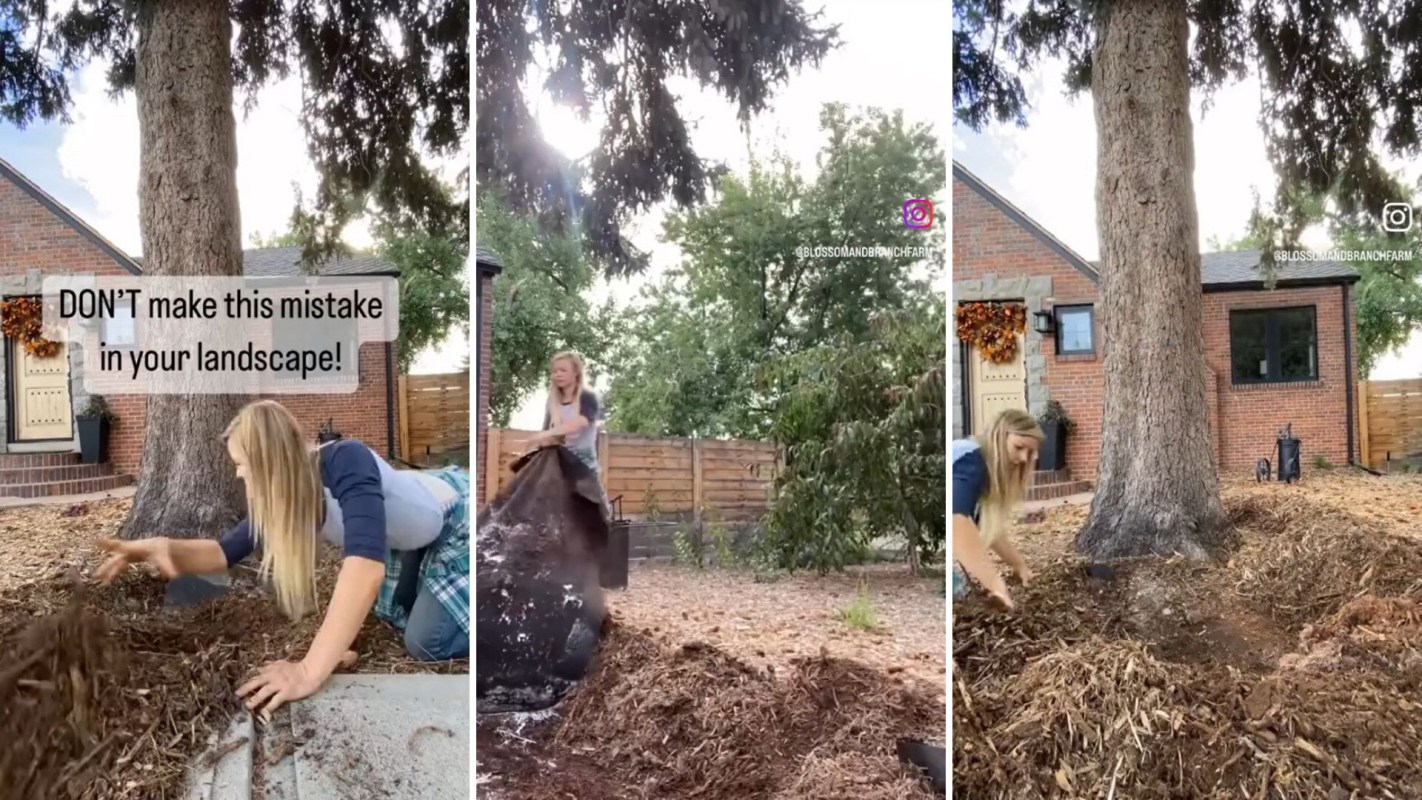A fifth-generation Colorado farmer is doing what she can to help others maintain their yards without inadvertently damaging them.
TikTok user Briana Bosch (@blossomandbranchfarm) — of Blossom and Branch Farm in the Denver suburbs — shared a tip about how to correctly use landscape fabric.
The scoop
@blossomandbranchfarm WE HAVE TO TALK. There are two ways to use landscape fabric: many professional growers use it on TOP of the soil as a water and air permeable mulch that gets removed each fall and the soil is amended. This method can actually be helpful for no-till growers who don't use herbicides and have aggressively spreading weeds. The other way folks use it is as a weed suppressor UNDERNEATH mulch—which is a big mistake! what happens is the wood chips on top of the mulch just slowly break down into soil, and weeds grow on top of the fabric anyway! Instead, you can use wood chips in two ways: 1️⃣use a very thick layer to suffocate grass over 6 months to a year, after which you can plant into it (though in my dry climate it can take up to two years!). This is a good way to slowly convert a lawn one section at a time to do native plants, just smother them with wood chips until you're ready to plant! Then plant small plants into the mulch, leaving the wood chips in place to help keep down weeds and hole in moisture 2️⃣ to use the same process, but seed afterward, just layer the woodchips and leave them for about a year until the grass is dead and the ground is softer, then remove the woodchips (you can reuse them elsewhere in the landscape) and use the exposed remaining soil as your seeding surface. Have you ever had to remove landscape fabric from underneath mulch like this in your garden? Tell me your story! #WoodChips #permaculture #LandscapeFabric #RegenerativeGardening #Gardening #KillYourLawn #LawnDestroyers #Garden #Gardening #gardenersworld #gardentok #foryou ♬ original sound - Bri
The 20-second clip showed how difficult it can be to get rid of the weed-preventing material, which may disrupt natural biological processes.
"Folks use it … as a weed suppressor UNDERNEATH mulch — which is a big mistake!" Bosch wrote in a caption. "What happens is the wood chips on top of the mulch just slowly break down into soil, and weeds grow on top of the fabric anyway!"
Bosch noted that professional growers use landscape fabric on top of the soil, then remove it each year and amend the soil.
"This method can actually be helpful for no-till growers who don't use herbicides and have aggressively spreading weeds," she wrote.
How it's helping
The advice falls in line with other expert guidance.
Landscape fabric can be especially damaging to trees as well, preventing water, oxygen, and other nutrients from reaching roots.
"I have arguments about this stuff with people all the time! It's awful!" one user commented. "I don't know what the appeal is."
Bosch replied: "They like spending money and doing extra work??"
What everyone's saying
Other commenters noted that cardboard boxes and newspapers can also fill the role for which landscape fabric was created.
Some users lamented that their rental properties or the previous owners of their homes used landscape fabric, much to their chagrin.
"It took me two years to get all remnants of mine out & 5 to repair soil," one commenter said. "Some parts still lack, but it's far healthier."
Even a landscape contractor said they didn't recommend it.
"I tell people this all the time it's just a gimmick," they wrote. "There's no solution to a weed-free yard."
Join our free newsletter for easy tips to save more, waste less, and help yourself while helping the planet.









